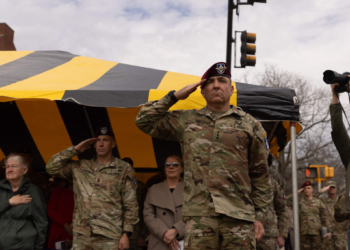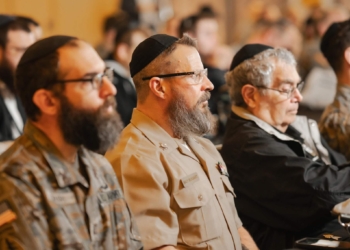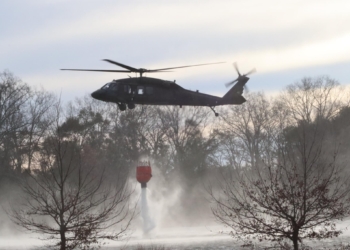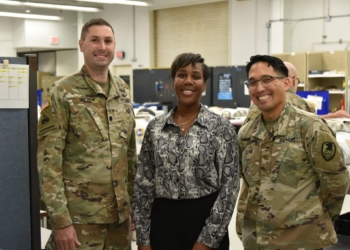The National Museum of the United States Army opened yesterday on the Army’s 246th birthday. The celebratory event featured music from the Army Band and the Fife and Drums Corps, along with period costumes, cupcakes, and more.
According to officials, the opening of the D.C. area’s newest tourist attraction was well worth the wait. The Fort Belvoir-based museum initially opened in November 2020 but closed temporarily due to the coronavirus pandemic. Kerri Kline, vice president of operations at the Army Historical Foundation, said this week’s event is a true celebration.
“Sharing this opening on the Army’s birthday and seeing visitors back in the building has been a great thing,” Kline said.
“What’s been really exciting is the amount of interest that people have had in the museum,” she added, noting that during the pandemic the foundation and museum staff maintained engagement through virtual programs, email blasts, and a variety of videos.
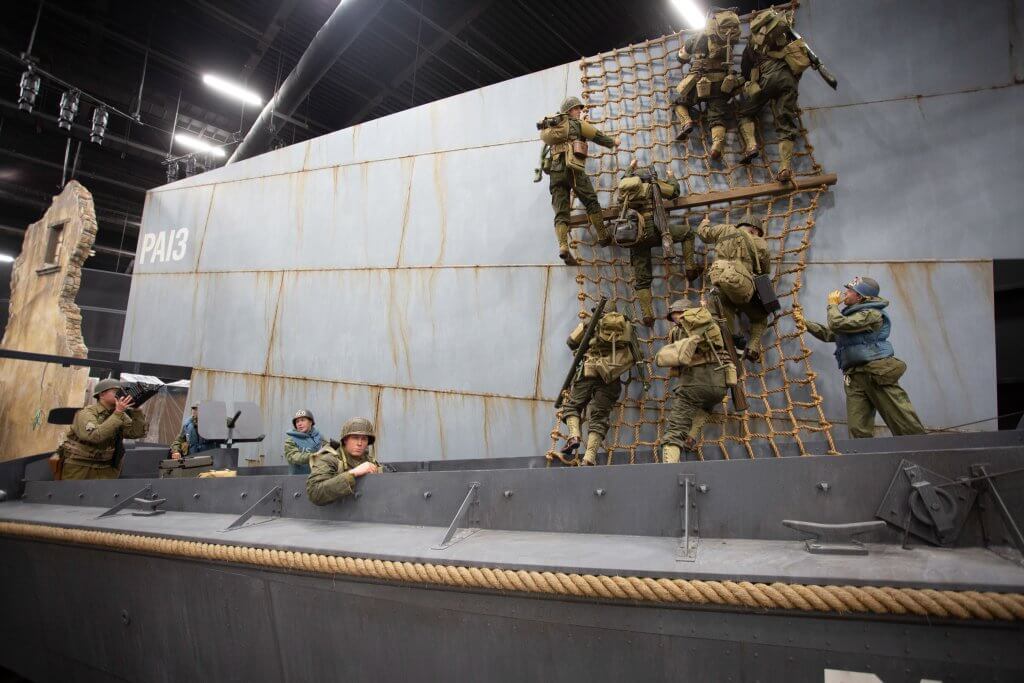
Capturing the contributions of U.S. soldiers
According to officials, the museum interprets the Army’s history by telling stories of soldiers and their experiences. The displays and interactive-learning exhibits illustrate the Army’s role in building and defending the nation, humanitarian missions, and technological and medical breakthroughs.
The lobby, which measures 8,600 square feet, contains illuminated glass panels overhead and a black granite wall with engravings of every campaign throughout history.
Forty-one 7-foot stainless-steel pylons contain etched images of both famous and lesser-known soldiers throughout history, telling their personal accounts. Fighting for the Nation Galleries on the first floor share the role of the Army in the founding of the nation from 1607 until the present day through six chronologically ordered galleries. Additional features include a multi-sensory 300-degree theater and a tranquil rooftop.
Artifacts that tell a story
Army veteran Lou Dorfman, who retired after 34 years of service, now works as a volunteer tour guide. He loves the museum and is passionate about the way the artifacts share untold stories. Those of particular interest to him are a Civil War-era saber, World War I steel helmet, Gen. Douglas MacArthur’s cap, and one of six remaining Higgins boats that allowed American soldiers “to run to the beach” during the invasion of Normandy.

In the Cold War Exhibit, Dorfman told the story of how the Army Jeep was derived from slang for both new recruits and vehicles.
“This was a light general-purpose, 4-wheel-drive vehicle, but that was too much to say. The Army soldiers shortened to general-purpose vehicle and later ‘GP’ during World War II.”
Dorfman shared that this was later colloquially called “Jeep” and has been integral to the Army ever since.
“This vehicle here was a favorite when I was a soldier,” Dorfman said pointing to a vehicle and recalling his time in Italy three decades ago. “The passenger seat of this particular model was converted to a cooler for soldiers to secretly store beer. We always wondered why the guys who rode in this model were so happy,” he said with a laugh and a wink.
Personal war reflections
Army Lt. Col. Paul Tanghe, professor of military science at Fordham University, who was touring the Changing World Gallery, which features exhibits from Desert Storm, Iraq, and Afghanistan, found numerous personal connections during his tour of the museum.
“It’s like visiting Disneyland,” he said.
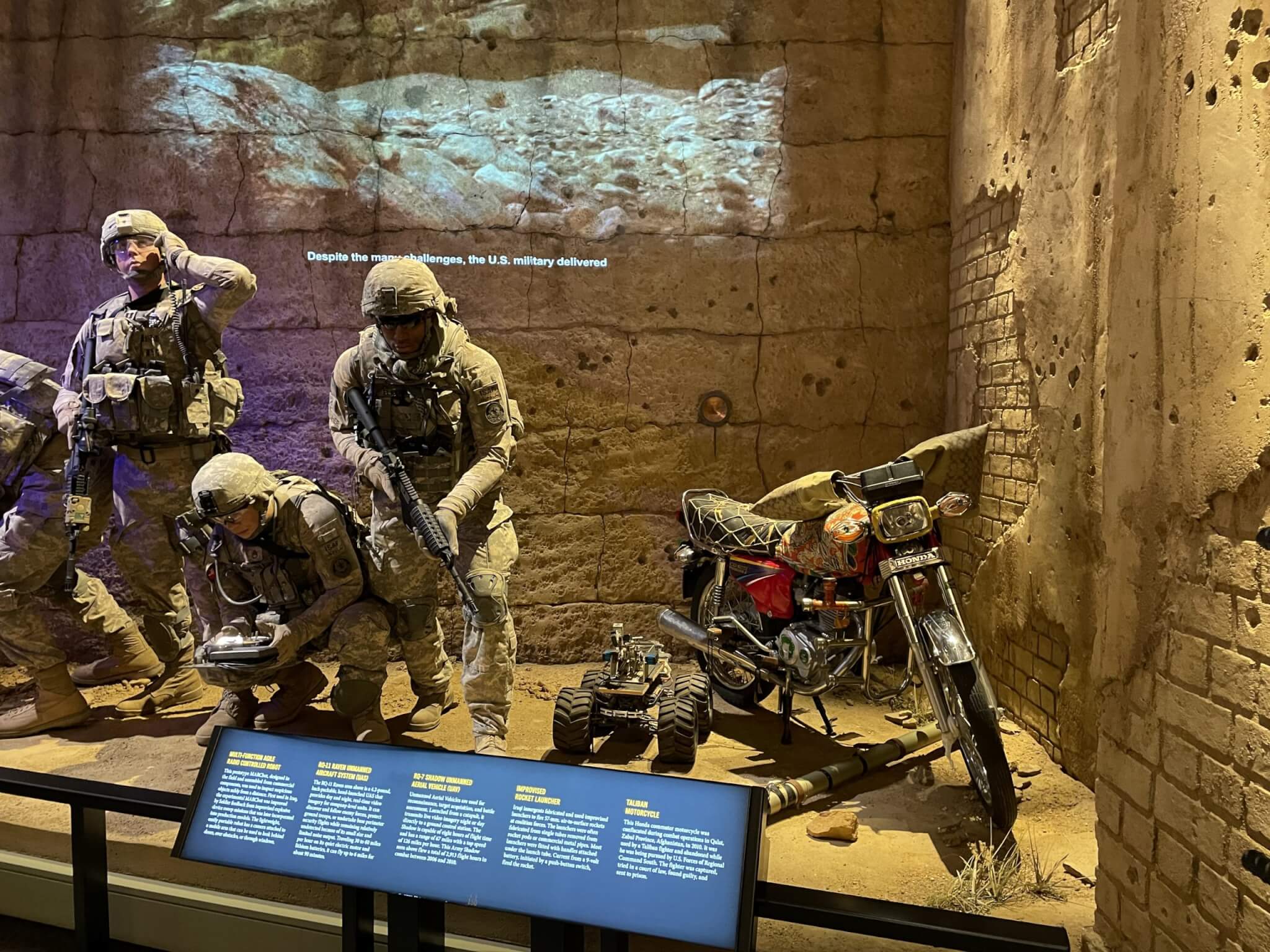
Stumbling upon an exhibit featuring a Taliban motorcycle that was confiscated during combat operations in Qalat, Zabul Province, Tanghe recalled his unit’s experience confiscating a similar bike in 2009 while supporting Afghan troops in the region.
“This brings back distinct memories,” he said.
When asked what this museum means to the Army, veterans, and the general populous, Tanghe said that having a dedicated museum is tremendously special. “
The U.S. Army and our troops are national treasures. It’s neat to see the way that the museum is sharing this experience,” he said.


















